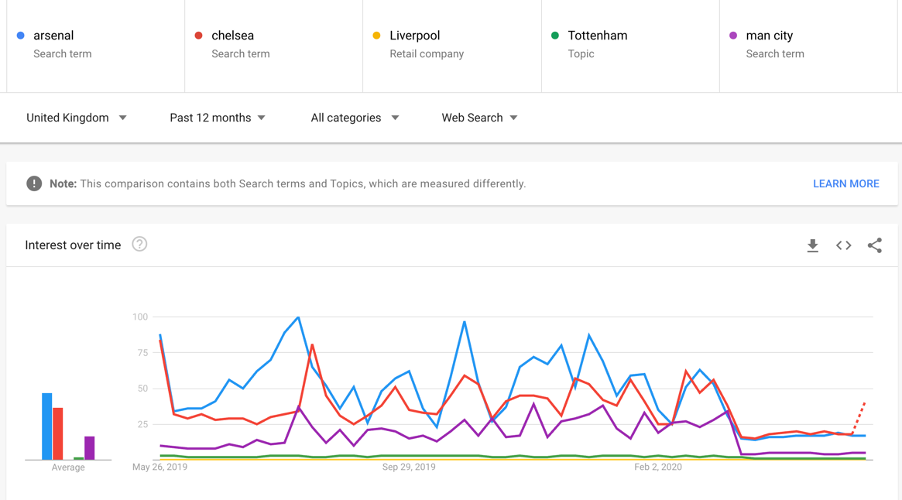3 min read
Honchō Scoops Up Two UK Search Awards!
It’s official, we've added not one, but two shiny trophies to our awards cabinet! We’re over the moon to share that we’ve triumphed at the UK Search...
In one of our latest insight pieces, we explored the impact of the Coronavirus on the search trends within multiple markets. To collect the data, we used Google Trends. This data gives you information on how people are searching for a keyword, relative to its average search interest and relative to a chosen time period.
Using this reliable Google Trends data, marketers can anticipate how their audiences’ attitudes and behaviours change over time. This allows marketers to plan their activities and campaigns in order to target the correct audience when interest peaks, giving them better results. Keyword research, tools such as Ahrefs, provide you with an average monthly search volume but don’t give an indication as to when the search interest peaks. However, combining the search volume and the interest data provides you with more accurate insight into how much search volume to expect for a particular period.
To get an accurate view of how customers are behaving within an industry, it is essential to analyse the search interest for a broad variety of keywords. Using a high volume of keywords will give an accurate and reliable perspective of the industry on which you can make business decisions.
So, when conducting our search insights data piece, we wanted to ensure that we analysed our industries thoroughly and broadly. However, there are some fundamental limitations which meant that it would be very time consuming to get this data for hundreds of keywords. Therefore, this required an innovative solution to work around this problem.
One of the main limitations of Google trends when collecting data in bulk is that you can only view the data for up to 5 keywords. You can only collect data for five keywords at a time and there is no bulk upload or CSV file upload option.

Another major limitation to Google Trends is that even when you are looking at data for five different search terms, the data present is a comparison of the relative data of the different keywords. This means that the data for each of the keywords is relative to the other keywords and changes accordingly. Therefore, adding a keyword with a high search interest will reduce the search interest for the other keywords. This relative data will not give an accurate dataset to identify the search trends within an industry. We will need to get search interest data for each individual keyword and use that to get an average for the market.
This meant that not only do we need to create a report which will give us data for a bulk number of keywords, but we also need to ensure that the data for each keyword is not relative.
As Google Trends does not offer a solution to upload a file for a bulk report, we had to find a way to create a bulk report ourselves. To do this, we had to create a python script which automates the process of collecting Google Trends data for each keyword. The Python script involves an input (keywords), the process of collecting the search interest data from Google Trends and an output, which is a report showing the individual search interest data for each keyword.
To learn more about the Python script we created and the technical side of things, read our blog on How To Use Python To Automate Google Trends Data.

3 min read
It’s official, we've added not one, but two shiny trophies to our awards cabinet! We’re over the moon to share that we’ve triumphed at the UK Search...

5 min read
Understand ecommerce attribution models which attribution models can maximise your marketing efforts and ROI.

3 min read
Explore how social commerce is changing the way we shop online, blending social interactions with digital commerce for a seamless buying experience.